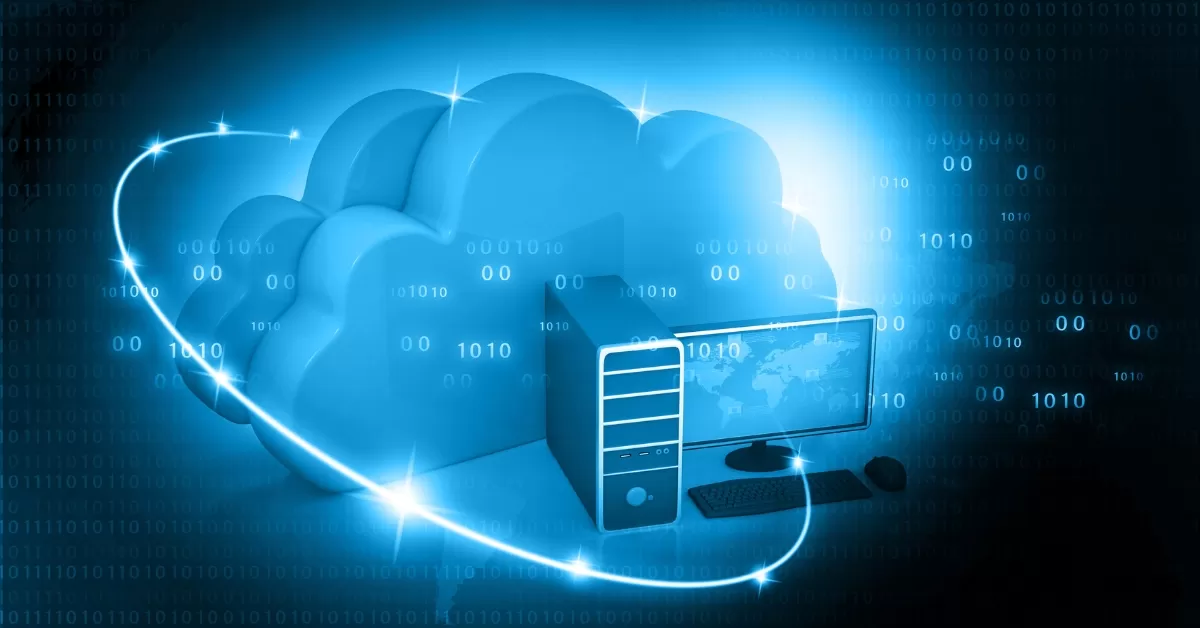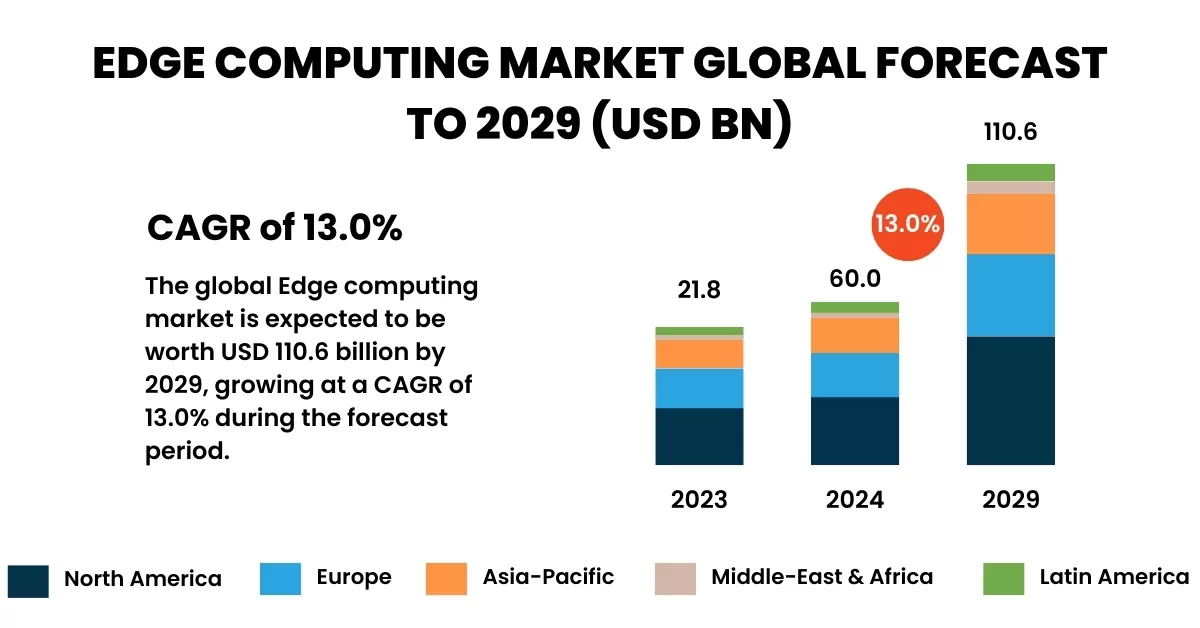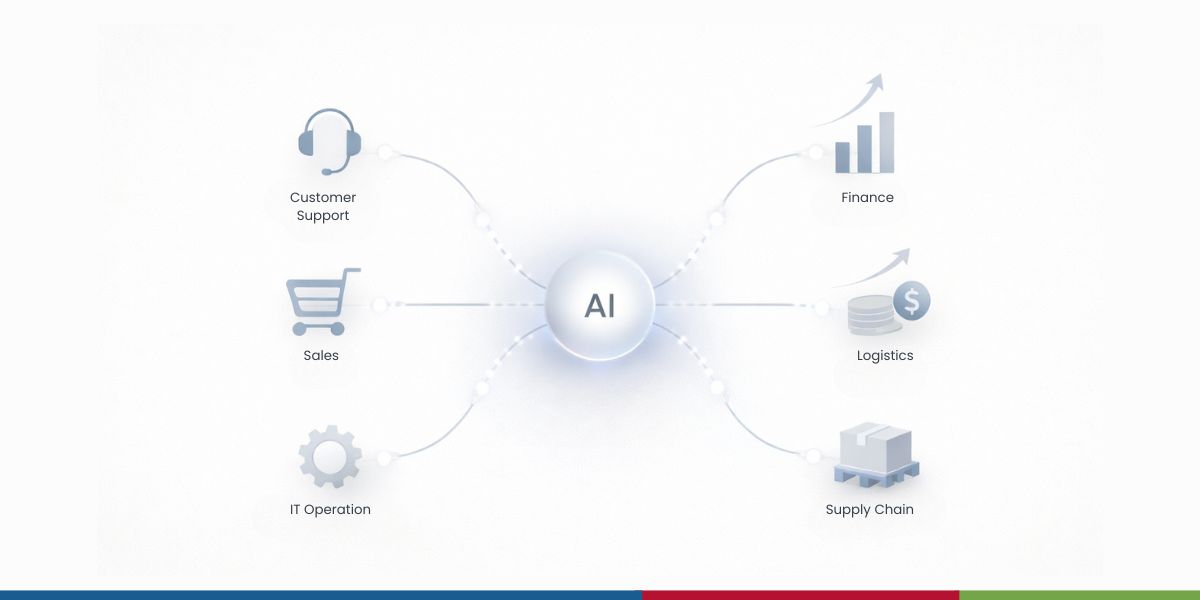The Edge Computing Market 2025 – From Autonomous Vehicles to Smart Cities

4 min read | By Postpublisher P | 13 February 2025 | Marketing
The Edge Computing Market is To Expand From USD 60.0 billion in 2024 to USD 110.6 Billion By 2029.
Edge computing is making it easier to process data quickly and close to where it’s created. This helps devices and systems work faster and more efficiently. Instead of sending all data to faraway servers, edge computing keeps it local, which means less delay and better performance. As more devices get connected, edge computing applications will play a big role in making sure everything runs smoothly in real time, like smart homes, self-driving cars, and industrial machines.

Edge Computing—The Next Technological Frontier in 2025
As technology advances and data generation reaches unimaginable heights, the traditional approach to cloud computing trails behind in accepting the demands of real-time processing with low latency. Edge computing, which ensures data processing closer to its source, is flourishing to become a revolutionary solution. Here is a look at how edge computing will revolutionize industries in 2025.
1. Understanding the Importance of Edge Computing
Future of Edge computing shifts data processing from centralized cloud servers to local devices or nodes and bandwidth use. By enabling real-time decision-making and supporting applications like autonomous vehicles, smart cities, and industrial automation, where every millisecond counts.
2. Key Elements of Edge Computing Architecture
These contain work layers in which edge computing challenges run across four interconnected levels:
𝐃𝐞𝐯𝐢𝐜𝐞 𝐋𝐚𝐲𝐞𝐫: IoT devices and sensors, which collect raw data.
𝐄𝐝𝐠𝐞 𝐋𝐚𝐲𝐞𝐫: Gateways and local servers that perform source processing of data.
𝐅𝐨𝐠 𝐋𝐚𝐲𝐞𝐫: Intermediate storage and processing.
𝐂𝐥𝐨𝐮𝐝 𝐋𝐚𝐲𝐞𝐫: It is mainly concerned with large-scale data storage and analytics through complex means. All those together form layers that ensure efficient data movement and processing.
3. The Emerging Networking Technologies will Fuel Edge Adoption
Real 5G Networks, SDN and NFV are among those with powers to enable edge computing. All these innovations assure a faster connectivity choice, lower latency and dynamic scalability of resources, thereby making everything ironclad and viable.
4. AI and Edge Computing Integration
Edge AI has been the culmination of AI at the edge for devices to take advantage of distributed computing without even relying on centralized cloud resources; techniques such as model compression enable machine learning over low-power devices, opening an avenue for real-time video analytics, facial recognition, or predictive maintenance applications.
5. Security Challenges in Edge Computing
It introduces new risks in terms of security. Strategies such as strong device authentication, robust data encryption, and IDS play an important role in securing an edge environment. Management of security concerns can also be achieved with AWS IoT Device Defender and Azure Security Center for IoT.
6. Real-World Applications Transforming Industries
Edge computing is changing the game of industries by making data processing fast and local. Applications range from:
𝐀𝐮𝐭𝐨𝐧𝐨𝐦𝐨𝐮𝐬 𝐕𝐞𝐡𝐢𝐜𝐥𝐞: Edge computing in autonomous vehicles will sensor the data processing of an autonomous vehicle enabling it to work at its peak efficiency because edge computing can ensure that it navigates safely and fast.
𝐇𝐞𝐚𝐥𝐭𝐡𝐜𝐚𝐫𝐞:In-situ diagnosis and prompt response
𝐒𝐦𝐚𝐫𝐭 𝐂𝐢𝐭𝐢𝐞𝐬: Edge computing in smart cities supports faster decision-making in smart cities with improved public safety and better traffic management by processing data locally and rapidly.
𝐌𝐚𝐧𝐮𝐟𝐚𝐜𝐭𝐮𝐫𝐢𝐧𝐠: Improved quality control and predictive maintenance
Edge Computing Vs Cloud Computing
The relationship between edge computing and cloud computing helps balance local data processing with centralized storage, ensuring faster performance and efficient management.
Applications of Edge Computing [2025]
Edge computing is in fact a technology that brings data processing closer to where it is needed, such as devices or sensors rather than sending all the data to faraway data centers. This makes things faster and more efficient. Here are a few applications:
𝐒𝐦𝐚𝐫𝐭 𝐇𝐨𝐦𝐞𝐬: In smart homes, devices like lights, thermostats, and security cameras use edge computing to process data locally. This way, they can react fast without needing to connect to a distant server.
𝐒𝐞𝐥𝐟-𝐃𝐫𝐢𝐯𝐢𝐧𝐠 𝐂𝐚𝐫𝐬: Edge computing is used by self-driving cars to process camera, sensor, and radar information in real time, enabling them to make fast decisions, such as stopping at a red light or avoiding an obstacle. A clear and undamaged windshield is crucial for these systems to function properly. If you need windshield replacement in Calgary, NW, ensuring high-quality glass installation will help maintain the accuracy of these advanced vehicle systems.
𝐇𝐞𝐚𝐥𝐭𝐡𝐜𝐚𝐫𝐞:Medical devices such as heart monitors are applying edge computing for processing the data of patients on a real-time basis, thus doctors can know the immediate feedback without waiting for the data to be sent to a central server.
𝐑𝐞𝐭𝐚𝐢𝐥:In stores, edge computing technology will be able to track inventory, process transactions, and even manage security cameras in real time. This can make for a better experience for customers and actually facilitates the operation of more efficient business.
𝐌𝐚𝐧𝐮𝐟𝐚𝐜𝐭𝐮𝐫𝐢𝐧𝐠: Factories use the edge computing platforms to monitor their machines and processes. On-site data analysis helps them identify emerging problems before those problems cause delays or expensive repairs.
The Hardware Segment is Projected To Account For Over 48% Of The Edge Computing Market Share By The End Of 2037. (4.3%)
Benefits of Edge Computing
Edge computing trends gives many advantages because it processes data nearer to its creation point rather than far-off data centers. This makes a device or system faster and more effective in delivering processes. The following are some of the key benefits of edge computing:
𝐅𝐚𝐬𝐭𝐞𝐫 𝐃𝐞𝐜𝐢𝐬𝐢𝐨𝐧-𝐌𝐚𝐤𝐢𝐧𝐠:Since local processing reduces delays, edge computing provides fast responses and quick decision-making. This is important in applications like self-driving cars and healthcare devices.
𝐈𝐦𝐩𝐫𝐨𝐯𝐞𝐝 𝐏𝐞𝐫𝐟𝐨𝐫𝐦𝐚𝐧𝐜𝐞: With less data going to distant servers, edge computing saves bandwidth and enhances the overall performance of applications, thus making them more reliable.
𝐋𝐨𝐰𝐞𝐫 𝐋𝐚𝐭𝐞𝐧𝐜𝐲:Edge computing minimizes the time it takes for data to travel between devices and servers, which leads to less lag and more efficient operations, especially in real-time applications.
𝐁𝐞𝐭𝐭𝐞𝐫 𝐒𝐞𝐜𝐮𝐫𝐢𝐭𝐲: By keeping sensitive data closer to its source, edge computing enhances security and privacy, thus decreasing the risk of data breaches.
𝐂𝐨𝐬𝐭-𝐄𝐟𝐟𝐞𝐜𝐭𝐢𝐯𝐞: As edge computing minimizes the need to transfer data constantly to the remote servers, bandwidth costs go down along with some savings on cloud storage.
𝐒𝐮𝐩𝐩𝐨𝐫𝐭𝐬 𝐈𝐧𝐧𝐨𝐯𝐚𝐭𝐢𝐨𝐧:Edge computing supports technologies such as autonomous vehicles technology, smart cities, and IoT devices, thereby forcing innovation in related industries.
These benefits make edge computing essential for the future of technology.
Outcome
This brings the processes closer to sources of data, improving performance and speeding up processes, thereby providing real-time decisions. In 2025, the edge will be used by industries ranging from autonomous vehicle technology to smart cities in healthcare and manufacturing for reduced latency, enhanced performances, and costs. The edge computing trend supports faster responses and reliable systems through reduced latency, improved performance, and reduced costs. It will be built with AI and advanced networking and security features for innovation and efficient operational results. As the internet of things scales up, edge computing will play an important role to fulfill the increasing demands of a digital age.
The latest from our editors
Join over 150,000+ subscribers who get our best digital insights, strategies and tips delivered straight to their inbox.


